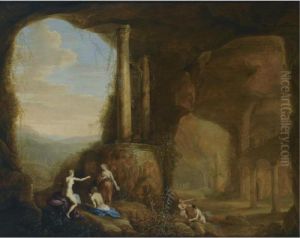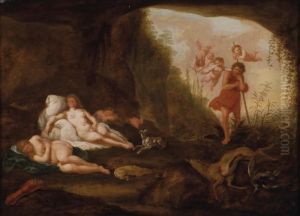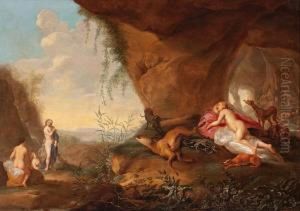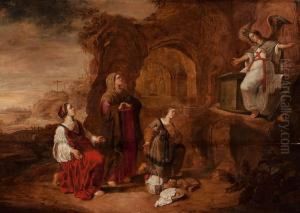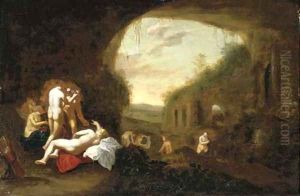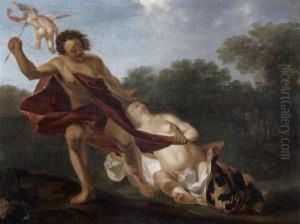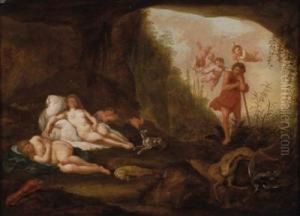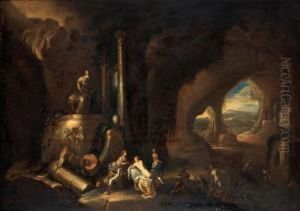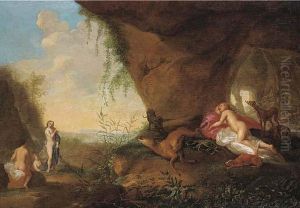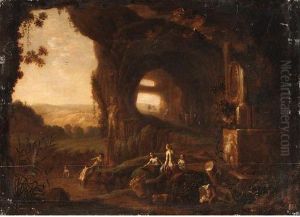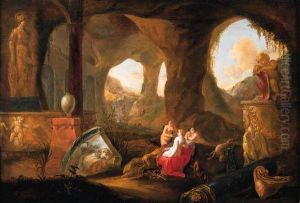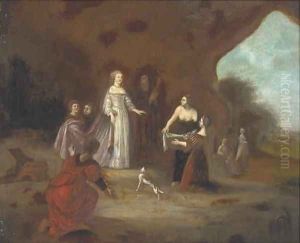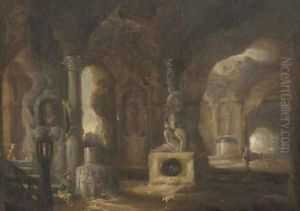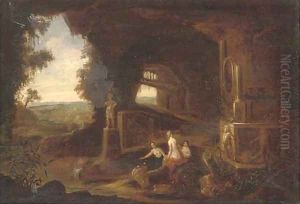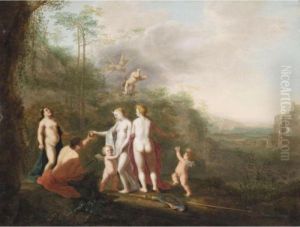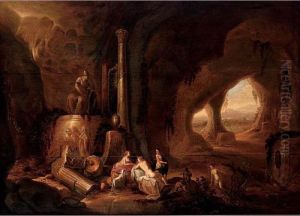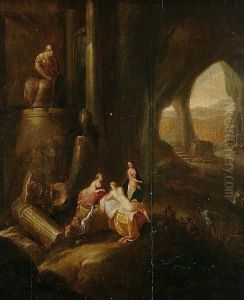Abraham van Cuylenborch Paintings
Abraham van Cuylenborch was a Dutch Golden Age landscape painter who was born in the early 17th century, though the exact year of his birth is not well-documented. His works are characterized by their intricate depiction of nature and rural life, often infused with a sense of tranquility and pastoral beauty.
Van Cuylenborch was likely born in Utrecht, and he became a pupil of the prominent landscape painter Cornelis van Poelenburch, under whose influence he developed his style. His landscapes exhibit a clear Italianate influence, which was typical of many Dutch artists of the period who either traveled to Italy or were inspired by the works of those who had. This influence is seen in the warm color palette, the inclusion of classical ruins, and the use of light that Cuylenborch employed in his paintings.
Although not as well-known as some of his contemporaries, Van Cuylenborch's works were appreciated for their attention to detail and the harmonious compositions that featured both natural and architectural elements. He was skilled in creating atmospheric perspective, a technique that gives a sense of depth to the landscape by altering color and clarity to simulate distance.
Little is known about Van Cuylenborch's life and career, and few of his works have been clearly attributed to him, which makes it difficult to trace his artistic development or to establish a comprehensive catalogue of his oeuvre.
Abraham van Cuylenborch died in 1658. His works can be found in various art collections and museums, offering a glimpse into the art of landscape painting during the Dutch Golden Age. Despite the scarcity of information and surviving works, Van Cuylenborch remains a recognized figure within the context of 17th-century Dutch art, contributing to the era's rich tapestry of landscape painters.











